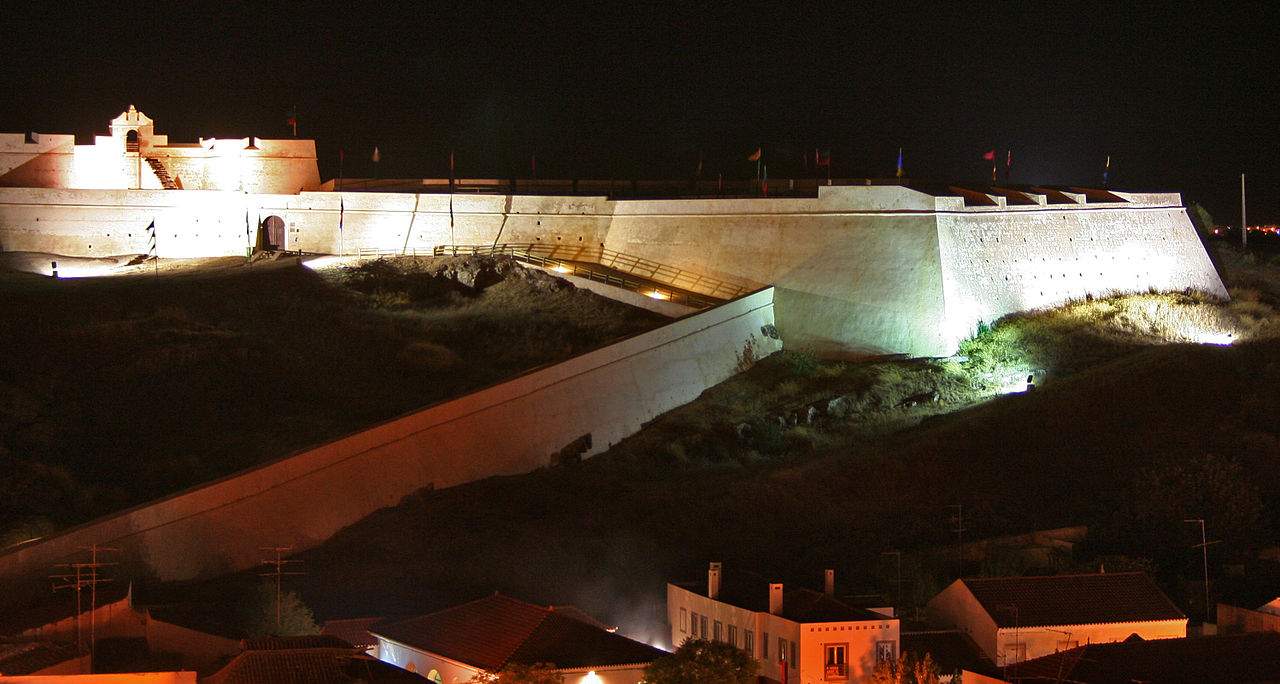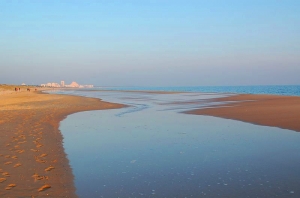
During the Antiquity and the earlier part of the Middle Ages, the hill where the Castle now stands was located precisely at the mouth of River Guadiana. Across the centuries, the strong siltation at the mouth of the Guadiana moved the actual river outlet further south, forming the present-day salt marsh. However, such long gone strategic setting has attracted wave upon wave of different settlers to Castro Marim throughout the ages, including Celtiberians, Phoenicians, Romans, Vandals and Moors.
Nowadays, it is possible to climb the walls and visit the ancient parapet. From there, you can enjoy a grand, all-encompassing panoramic view over the surrounding landscape. To the East, the distant horizon is dominated by the river and the Spanish city of Ayamonte. Close by, you’ll see the Nature Reserve marshland and the salt pans where the famed ‘flor de sal‘ (Castro Marim salt flower) is laboriously handcrafted. Within the defensive perimeter there is also a small Archaeological Museum (please, check the Castro Marim Map below), furnished with a plethora of artifacts documenting the rich and varied human presence in the region from the Bronze Age onwards. The premises are open from 9h00m to 19h00m (April-October) and from 9h00m to 17h00m (November-March). A small admission fee lets you visit both the dilapidated Castle and the inner Museum.
Unfortunately, budget restrictions are taking its toll, and the general ambience conveys a certain abandonment. That all changes in August, when a ‘Medieval Days’ festival is held within the old fortification – you can check the annual dates here (in Portuguese). This event takes place during the last weekend of August; it includes an array of gastronomic stalls where local products are on display, musical entertainment, traditional fencing and a medieval-style feast. A parade is held on the first day, first from the village to the castle, and on the final days, from the castle to the village proper. Noteworthy are also the Fort of Saint Sebastian (pictured above, at night) whose construction commenced in 1641 during the last Spanish-Portuguese war (the Portuguese Restoration War, one of many, many wars, squirmishes & drubbings between the two neighbours), a wealth of churches and chapels, and the old vernacular architecture of the village. Image: Alegna13
 Castro Marim municipality has a short coastline and only tree beaches: Praia da Alagoa, Praia do Cabeço (Retur) and Praia Verde. Contrary to other places in Algarve, the shoreline has a rather flat topography and a very gently sloping sand strip. For that reason, it is often possible – depending on tidal patterns and currents – to swim for quite a distance in shallow, quiet waters. Water temperatures are typically warm during summer, reaching more than 24ºC (75.2 F) at times. That makes them very popular not only among neighbouring Spanish people and avid swimmers, but also among parents with small children. The best of the lot is probably Praia Verde (literally, ‘Green Beach’, pictured left), mainly due to its natural and landscaped backdrop composed of Mediterranean pinewood and pristine dunes.
Castro Marim municipality has a short coastline and only tree beaches: Praia da Alagoa, Praia do Cabeço (Retur) and Praia Verde. Contrary to other places in Algarve, the shoreline has a rather flat topography and a very gently sloping sand strip. For that reason, it is often possible – depending on tidal patterns and currents – to swim for quite a distance in shallow, quiet waters. Water temperatures are typically warm during summer, reaching more than 24ºC (75.2 F) at times. That makes them very popular not only among neighbouring Spanish people and avid swimmers, but also among parents with small children. The best of the lot is probably Praia Verde (literally, ‘Green Beach’, pictured left), mainly due to its natural and landscaped backdrop composed of Mediterranean pinewood and pristine dunes.